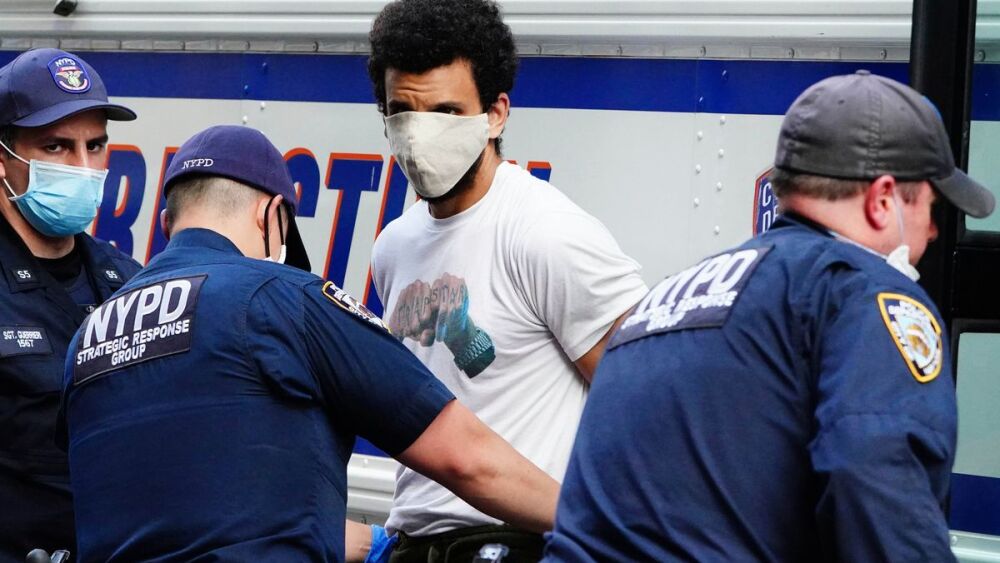When I was a new firefighter, my captain gave me some advice: “If you find yourself alone, start worrying.”
He wasn’t talking about being alone in a fire. Obviously, you would worry about that. He meant being alone almost any time when at work in the station. If you were alone, it meant that everyone else was probably doing something that you should also be doing. He was educating me about the intense team orientation of the fire service, and the negative consequences for someone who does not go along with it.
Think about the way firefighters speak highly of crewmembers: He’s a good troop. She’s easy-going and always willing to lend a hand. He doesn’t make waves.
One of the worst things you can say: He’s not a team player.
One voice could have changed everything
I’ve been thinking about my captain’s advice as I try to figure out why three Minneapolis police officers stood by silently and did nothing as their fellow officer knelt on George Floyd’s neck as he died in front of a crowd of people. Were all of them completely supportive of what the one officer was doing? Did any of them disagree but simply not speak up?
If any one of them had spoken up, it is likely that there would have been a completely different outcome from that event, both in the moment and in the days and weeks following.
History has proven that taking a stand works, especially from a position of inclusion or authority. One person, helicopter pilot Hugh Thompson, stopped the My Lai massacre during the Vietnam War. Ordinary citizens in Europe prevented deportation of Jews by Nazis during World War II, simply by standing up and saying no.
One of the deepest stains on fire service history was the use of fire hoses to attack peaceful protesters in Birmingham, Alabama, in 1963. Many fire department members had misgivings or strongly disagreed with the order given by Public Safety Director Bull Connor. But Connor was a powerful figure, and department leaders went along until the third day, when the chief finally stood up and said no. At that point, the conflict ended.
Why don’t individuals stand up when they witness dangerous, unprofessional or illegal behavior among their colleagues? There are several reasons for this inaction.
In some cases, they may actively agree with what is going on, or they may be neutral or confused about what is taking place and feel they have no firm stand to take. The aberrant behavior may have become so commonplace over time that it just seems normal.
But in some cases, they know what is happening is wrong, and they go along anyway. In Birmingham, subsequent investigations showed that some firefighters expressed deep opposition to using fire hoses against the protestors. But they still did it.
Go along to get along – a public safety problem
When making a decision whether to make a stand, there is always a risk/benefit analysis involved. This may happen unconsciously, but it always takes place. Will my actions really make a difference? What potential harm could come to me or others as a result of taking a stand? If the risks outweigh the potential benefits, it is unlikely that someone will act.
One of the concerns that surfaces in this risk/benefit analysis is the risk to the individual of being personally harmed – and one of the biggest of those risks is what my captain referred to in his advice. Going against the group can cause one to be ostracized, labeled, sidelined or harassed. Being shunned from the group is a big deal in fire and emergency services, and many firefighters are not willing to risk it.
No one is immune from this fear. In fact, those who are in the minority within an organization might feel even more pressure to go along to get along.
Inappropriate or unsafe behavior becoming normalized and individuals fearing reprisal for standing up against it is a dangerous combination. This is how bad things happen, from firefighters scamming reimbursement plans for personal gain, to a crew hazing new members by simulating a crime in the station, to a station using the rig for the purpose of drinking and partying on duty. It’s just normal. It’s not worth speaking up. And then when these bad acts are exposed, not only are that crew and fire department disgraced, but the entire fire service is hurt by the damaged trust that results.
Trust is essential at all levels
Trust is the currency of emergency service. Firefighters and other emergency responders cannot function without it. Trust must exist within the crew and department, and among other agencies and with the public.
Leadership and example are the ways trust is earned and fostered. Leadership must come not only from the top down in a chain of positional authority, but also among coworkers and colleagues.
In an official capacity, leaders must not only say the right things but also do the right things. They must provide training and skills to all members of the organization on how to size-up situations and make appropriate decisions. They must consistently reward desirable behavior and correct and punish unprofessional and inappropriate acts. They must empower all members of the organization to do the right thing, all the time.
Ultimately, all firefighters are leaders in their example and their choices. Informal leaders often have more power to influence organizational culture than those with rank or position. New recruits come on the job and look to everyone they work with for guidance on what is expected of them.
Firefighters need to know that they have this power and they will be expected to use it as necessary. Once that ethic is in place, it isn’t that hard to do the right thing or correct course when things start going off the rails.
One video that surfaced in the days following the death of George Floyd shows two police officers arresting a man during one of the demonstrations. One officer has his knee on the man’s neck. The other officer reaches out and pushes the man’s knee off.
And just like that, a life is potentially saved.














